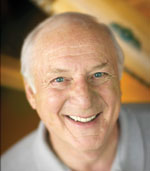Proficient Pilot: Airmanship
Safe, legal and comfortable

When I was hired by TWA in 1964, a challenging aspect of being a new co-pilot arose when the captain “gave me a leg,” meaning that it was my turn to fly the airplane. Although the best part of the job, flying “the captain’s airplane” also meant having to conform to his modus operandi, which wasn’t always the way we had been taught at TWA’s training center. All captains are different. This made it difficult to know what was expected of me at any given time. To be effective, a co-pilot has to be chameleonic and adapt without conflict to the foibles of a wide variety of personalities.
There was no such challenge when I first flew with Capt. Frank Timoshik on a round-robin Boeing 707 flight from Los Angeles to New York. He cleared the air as soon as he offered me the return leg. “It’s your airplane, Barry. Do whatever you’d like as long as it’s safe, legal, and comfortable.” With those few words, I completely understood how he wanted me to perform.
Timoshik was a great captain, one for whom I developed great respect and attempted to emulate when it became my turn to warm the left seat.
Those four words, “safe, legal, and comfortable,” helped to develop the manner in which I have attempted to fly all aircraft, large and small. I cannot think about flying safely without recalling Sailor Davis, a veteran safety instructor for TWA. He used to begin every new-hire class with this admonition, “You are professionals trained to deal with three things that can kill you: gravity, combustion, and inertia. Keep them under control, and you’ll die in bed.” It is difficult to summarize the safety role of a pilot better than that.
Safety in flight also requires judgment honed by experience. This means assessing variables as they occur, weighing them against possible risk, and determining the safest and most practical course of action. It is the stuff of which good pilots are made. One way to ensure exercising good judgment is to imagine that every flight is being made under the critical eye of an FAA inspector in the right seat.
Although complying with regulations might seem cut and dried, there is more to “staying legal” than meets the eye. Most pilots realize that material in the Aeronautical Information Manual is not regulatory, but it does detail what is expected of a prudent pilot. I generally regard the AIM as regulatory even though it is not.
Complying strictly with all regulations and safety practices is not easy. Try driving an automobile in the city for an hour without violating any traffic rules.
When Bob Pastore was my first officer (before he became a captain), he enjoyed challenging me and other captains to fly the perfect flight—without so much as a single regulatory violation. This, too, was almost impossible. Allow airspeed during a climb below 10,000 feet to exceed 250 knots by as little as a knot and Bob would point it out. “Two-fifty below 10 is a maximum,” he would say. “You’re not allowed to bracket that speed.” It was nit-picky, of course, but by the end of a flight there had been worthwhile discussions about a number of regulations not often given sufficient thought. You can accomplish the same by hiring an instructor to go along on one of your flights and asking him to critique all that you do. It can be humbling. We might strive for perfection, but it is almost impossible to achieve.
Keeping a flight comfortable is where stick-and-rudder skills enter the picture. My mentor and close friend, Paul Blackman, used to advise that if a passenger can feel what you are doing with an airplane, you’re doing it wrong. “There is no excuse for being ham-fisted with the controls. Caress the wheel with a velvet hand and minimize your passengers’ awareness of attitude, power, and configuration changes; smoothness is the key. Fly an airplane as though your mother were in the back seat.” He taught also that many pilots overreact to turbulence and compound the discomfort and anxiety it can cause.
Consider a VFR pilot suddenly realizing during descent that he is about to overshoot his target altitude. He hauls back on the yoke, adds a G, and arrests the hands of the altimeter at exactly the right place. A pilot aspiring to professionalism instead momentarily accepts the error and raises the nose with finesse, carefully returning the airplane to altitude without the passengers realizing it. Same thing goes when discovering that you’re about to overshoot the desired heading during a turn. Don’t snap-roll the airplane to capture the heading. Accept the error and return gracefully.Conducting a safe, legal, and comfortable flight is more an attitude than it is skill. It’s called airmanship.
Barry Schiff has written more than 1,600 magazine articles and currently is writing his fourteenth book. Visit the author’s website.


